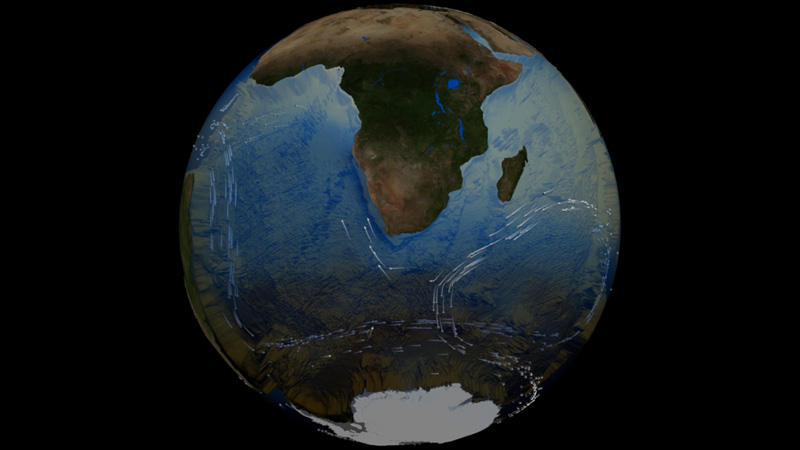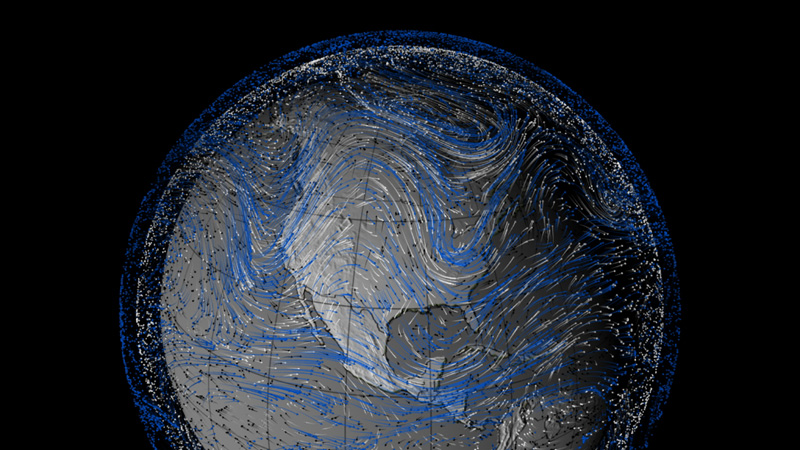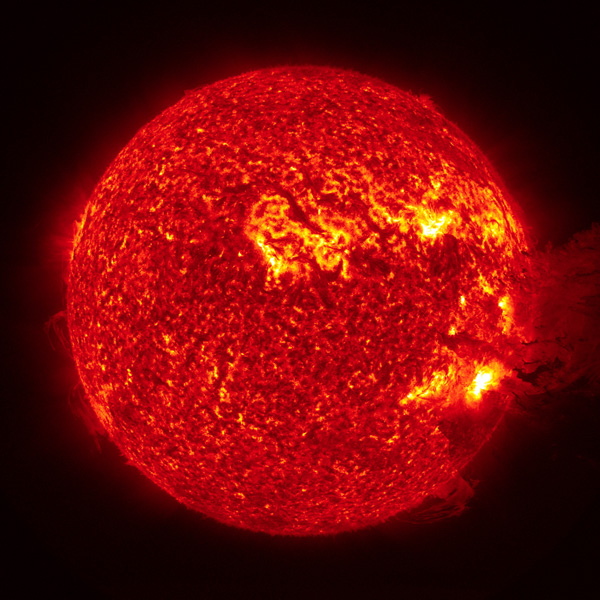For just a few moments during the movie, LOOP leaves the Earth and visits the nearest star: our own. But the sun is enormous and far away, and getting spacecraft into solar orbits presents no small challenge.
That doesn't mean it can't be done, of course.
NASA maintains a powerful raft of solar observatories working right now to study the great engine of our solar system. The solar images depicted in LOOP are actually composites from three of those vehicles, and represent the most accurate depictions of the sun ever shown on The Sphere.
Two of the satellites are twins, a matched set called the Solar Terrestrial Relations Observatory—better known as STEREO. This pair of spacecraft is designed to do precisely what the name implies, namely capture data about the sun from two different perspectives. The separation between these two vehicles enables three-dimensional depictions of solar structure, analogous to the ways our own two eyes capture stereoscopic images in ordinary vision. These images enable research about the sun's corona and massive eruptions of solar matter that can spew as much as 10 billion tons into space at more than a million miles per hour.
The other spacecraft is called the Solar Dynamics Observatory, or SDO. Think of it as a general health monitor for our sun. The mission has the overarching goal of studying how the 11 year solar cycle works. Taking continuous measurements of the sun's magnetic field, convection currents in its interior, and the hot plasma of the solar corona, SDO is a powerful tool in researching how solar activity directly influences space weather, and how the health of the sun varies over time. For the pictures of the Sun shown in LOOP, the visualization lab used nearly contemporaneous data from all three vehicles, gathered in the 30.4 nanometer range, and then combined them to form a single time sequence.








